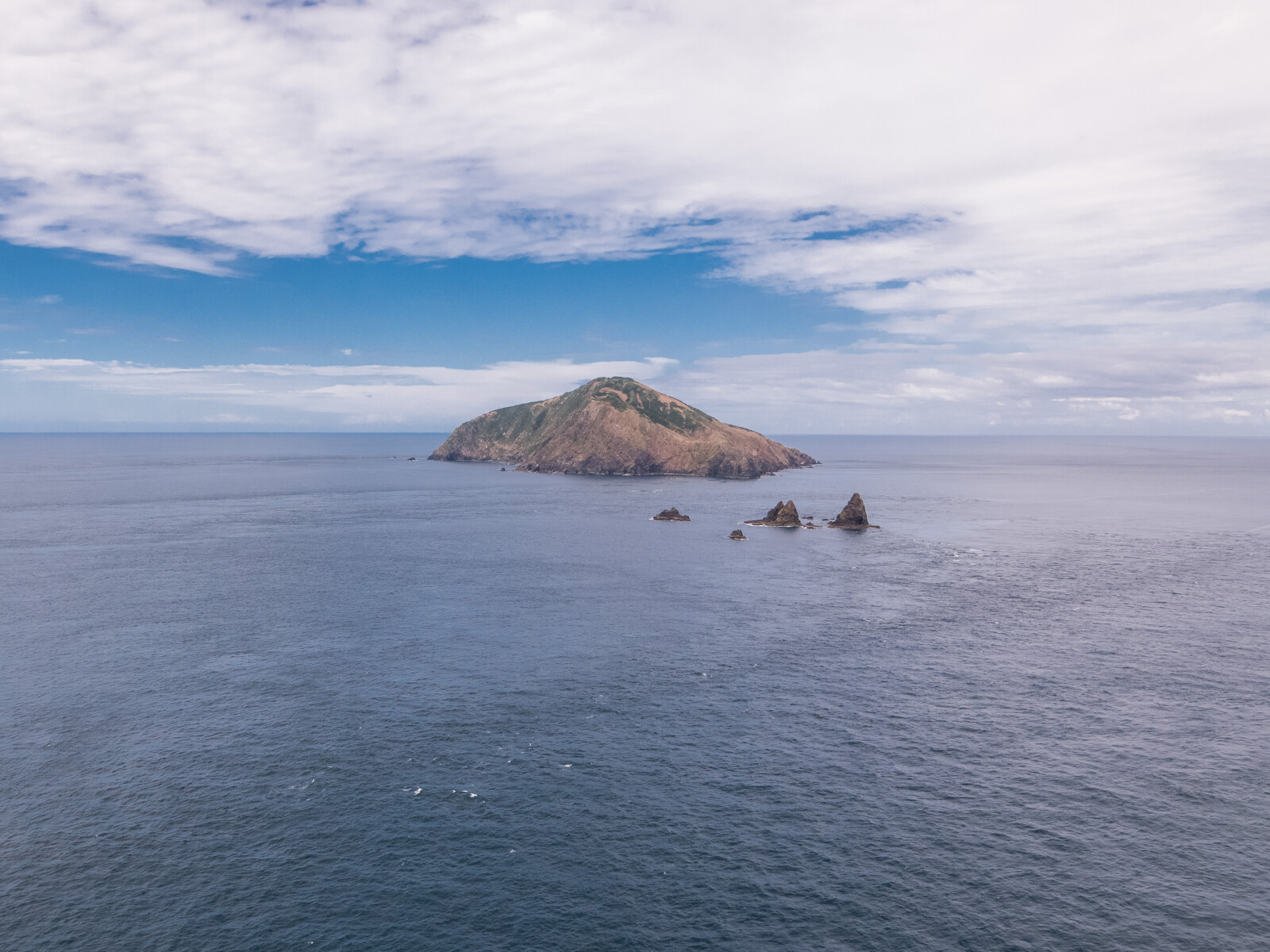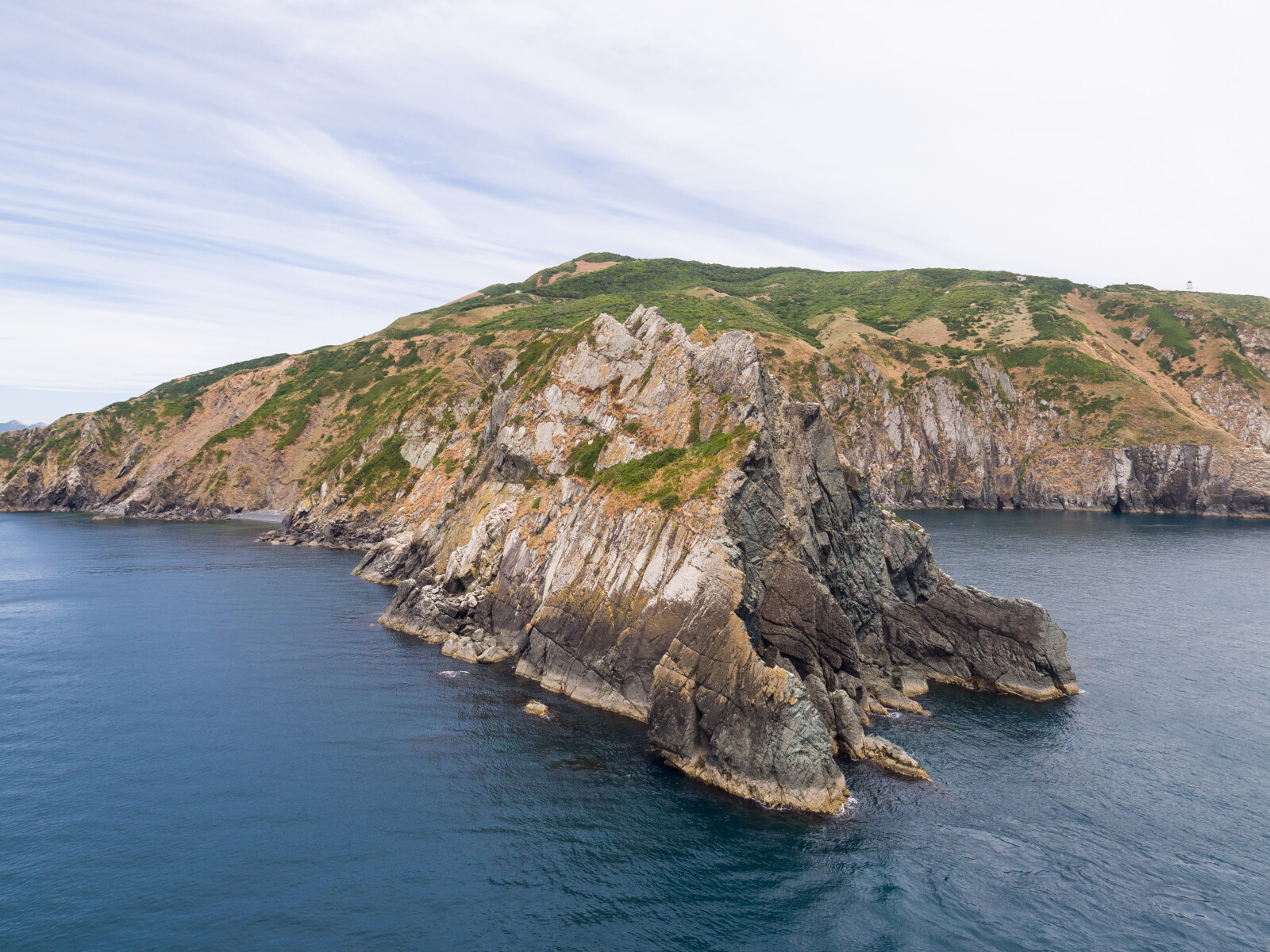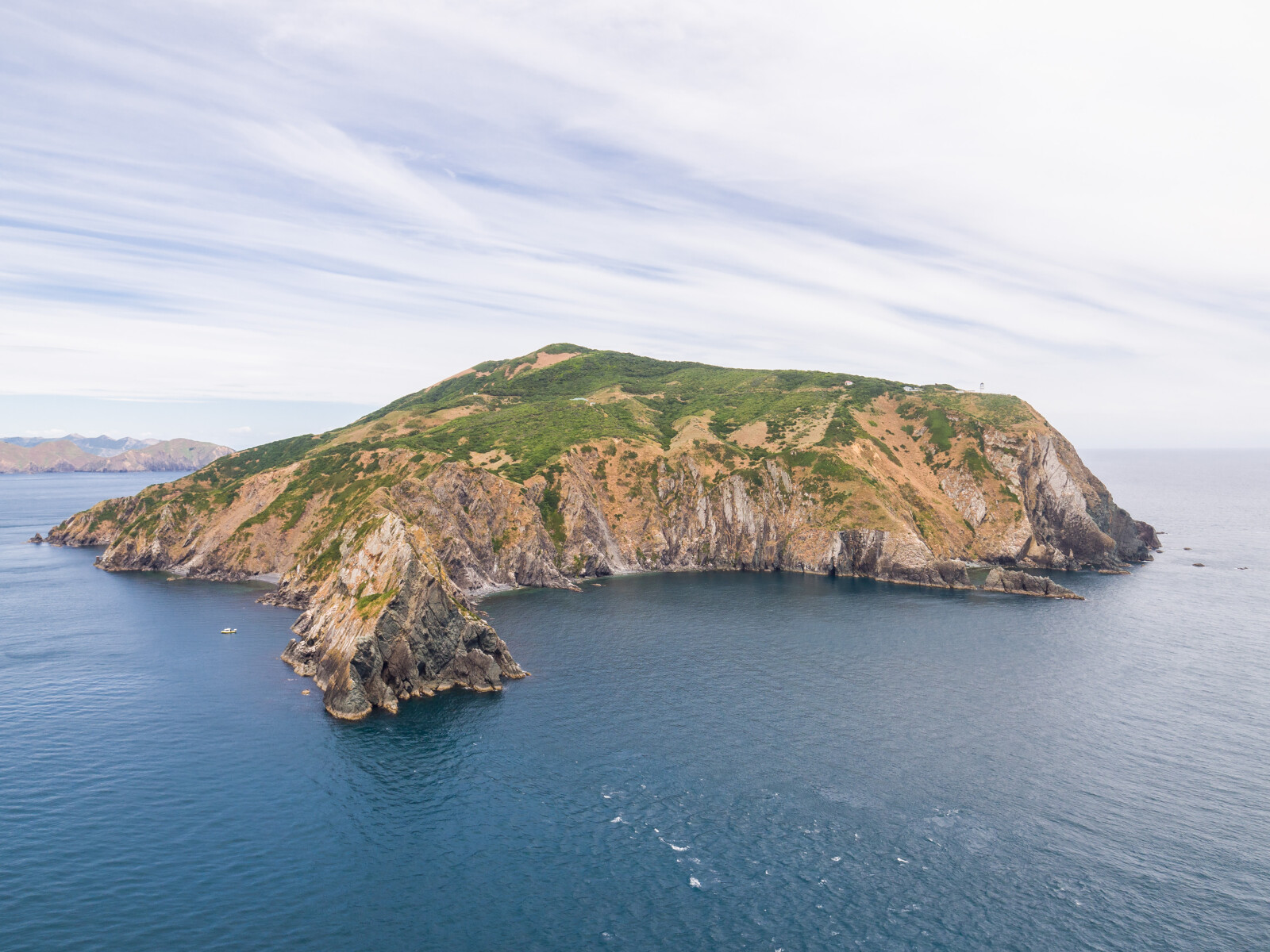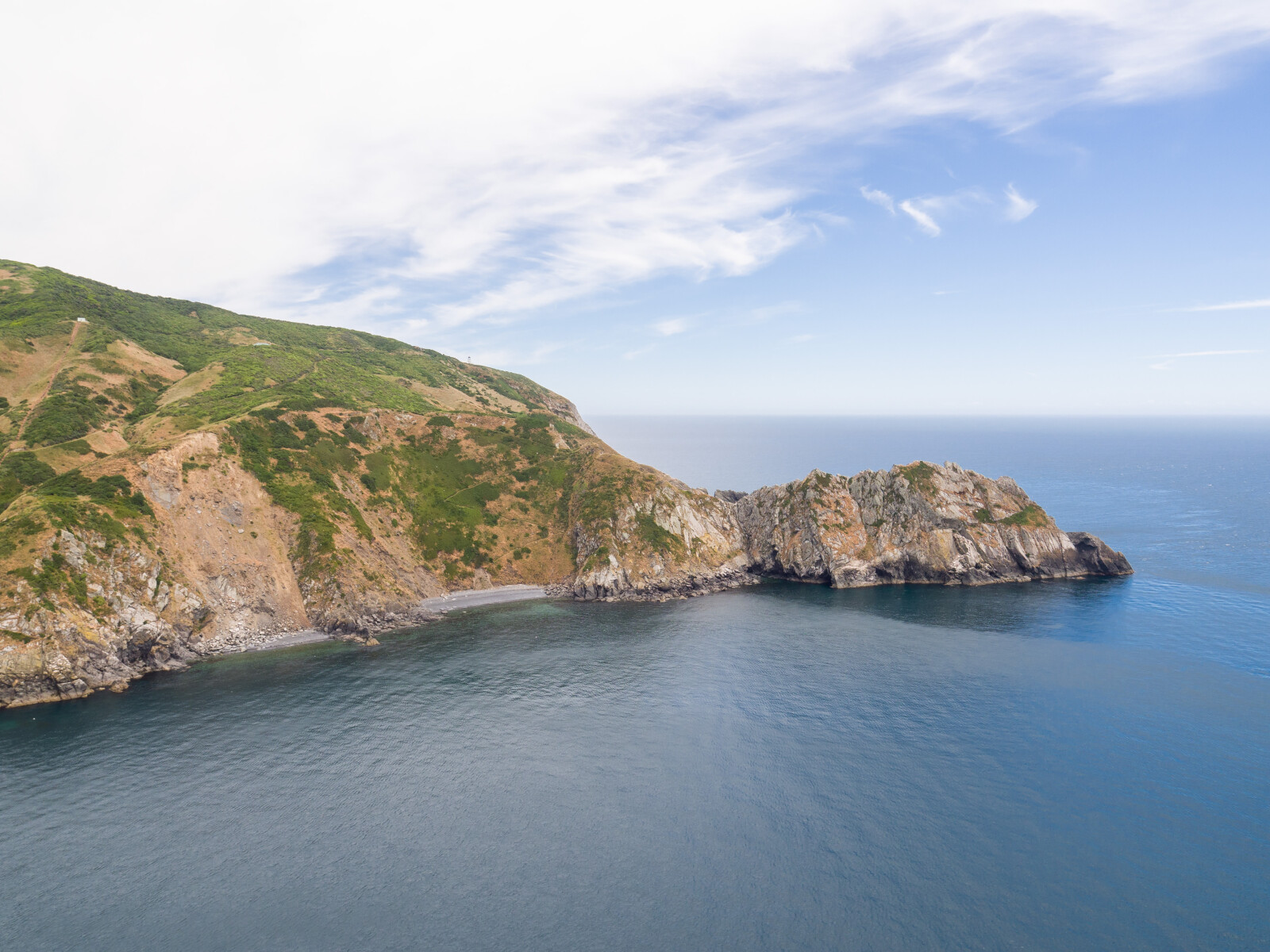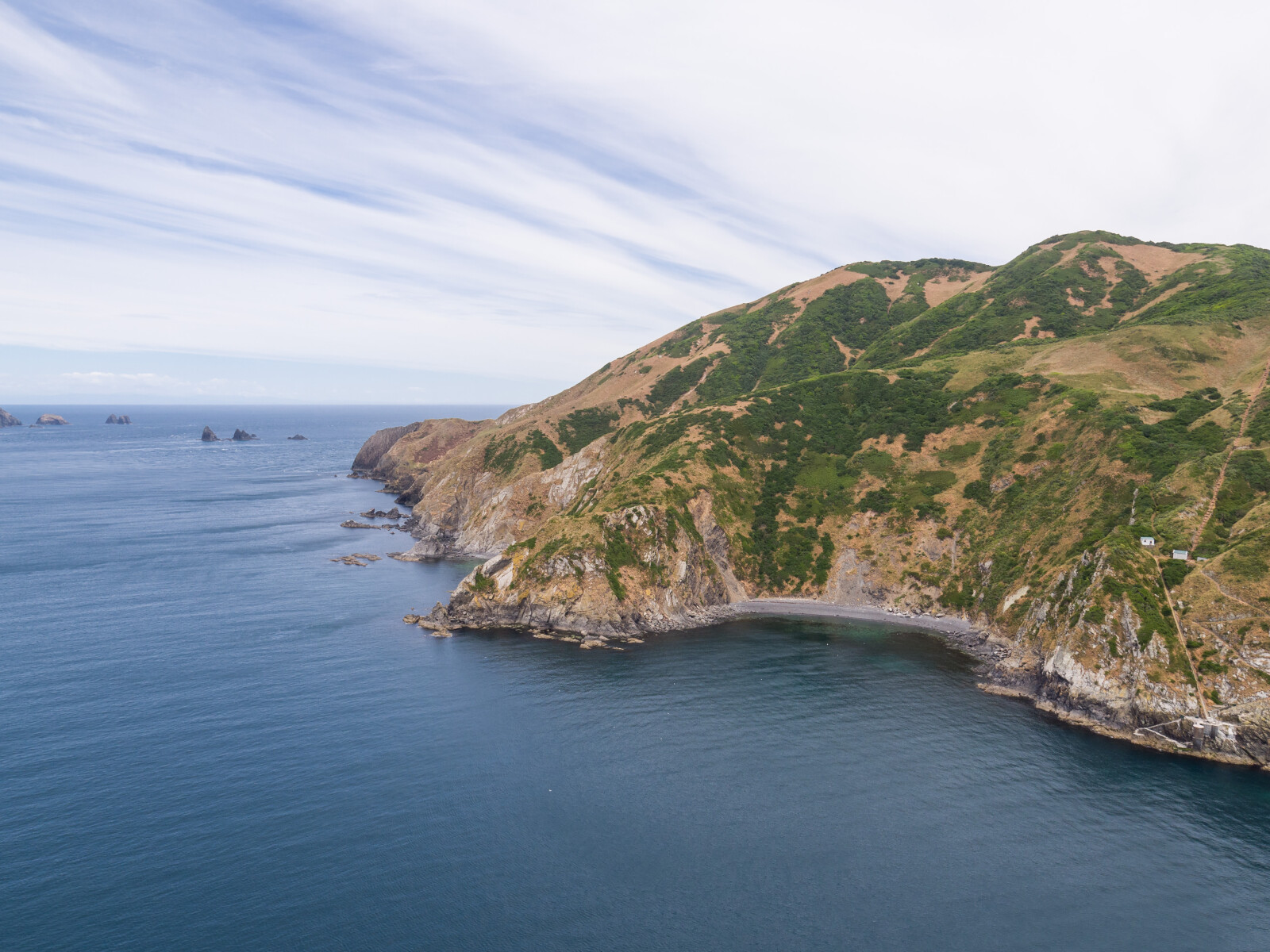The island’s Māori name, Takapourewa, refers to matipou trees floating in the water. Its origin most likely deriving from the forests that clad the island until the late nineteenth century.
In 1770, the island was named Stephens Island by Captain Cook, after Sir Philip Stephens the Secretary of the Admiralty Board.1
As early as the 1850s the island was recognised as an obvious location for a lighthouse. However, it was not until the early 1890s, following the stranding of several ships, that the Marine Department began work on the project.
Construction of the lighthouse proved to be very difficult due to the steep terrain and poor access. A horse drawn tramline had to be cut into the cliff face and supplies landed via a surf boat on to a platform built at the water’s edge. The lighthouse was completed in 1894.
Life for the lighthouse keepers and their families was challenging. Three families lived on the island at one time. They were required to undertake basic maintenance and repairs on the light as well as grow their own vegetables, look after livestock and help with environmental activities, such as eliminating wild cats and planting seedlings, in an attempt to reduce deforestation.
Existence on the island was extremely isolated. Basic medical treatment had to be provided at home and prior the establishment of the New Zealand Correspondence School in the 1920s, the education of children on the island was difficult as teachers never remained in residence for long. Communication with the mainland was limited to mail boat services and a radio telephone.2
The lighthouse keepers played a significant role in maritime communication and during the Second World War the island was used for coast watching activities. Later during the war a Naval Base was established on the island to maintain a radar station.3
By the 1938 the light, which was initially run on oil, was converted to electric power and run by two diesel generators. In 1989 the light was automated and the keepers withdrawn, making Stephens Island one of the last lighthouses in New Zealand to be de-manned.4
In 1966 Stephens Island (Takapourewa) was officially protected as a wildlife sanctuary. It is home to several endemic species, including the Hamilton’s frog and Ngaio weevil and rare species such as the tuatara, Stephen’s Island gecko and Cook Strait click beetle. The island also provides a secure breeding ground for many species of birds.5
The ecological importance of Stephens Island (Takapourewa) had been recognised as early as the 1890s. Scientists visited from all over the world, requesting examples of its unique fauna, including tuatara, for their collections. The lighthouse keepers, aware that the lizards were under threat from predators and collectors alike, lobbied the Governor of the Colony of New Zealand to preserve the species and it was due in part to their campaigning, that tuatara were protected under the 1907 Animal Protection Act.6
The history of ownership of Stephens Island (Takapourewa) is complex. Over the centuries many iwi settled around D’Urville Island (Rangitoto) and its surrounding islands. There is evidence of the Waitaha, a prehistoric iwi, in the region as early as 1100 and from the fourteenth century onwards, successive iwi originating from the North Island settled in the area.7
In 1883 official land title for D’Urville Island (Rangitoto) and its surrounding islands was awarded to Ngati Koata by the Nelson Maori Land Court.8 It was from Ngati Koata that in the 1894, Stephens Island (Takapourewa) was appropriated at a rate of seven shillings and sixpence per acre under the Public Works Act for the construction of the lighthouse.9
1. Olive Baldwin, Story of New Zealand’s French Pass and d’Urville Island (Plimmerton: Fields Publishing House, 1979) 143.
2. Olive Baldwin, New Zealand’s French Pass and d’Urville Island. Book Two: Sea Business (Plimmerton: Fields Publishing House, 1981) 22-26.
3. Baldwin, French Pass and d’Urville Island. Book Two, 81.
4. “Stephens Island”, Maritime New Zealand, accessed March 31, 2018, https://www.maritimenz.govt.nz/public/history/lighthouses/Stephens-Island/
5. “Stephens Island (New Zealand)”, Wikipedia, accessed September 27, 2022, https://en.wikipedia.org/wiki/Stephens_Island_(New_Zealand)
6. Baldwin, French Pass and d’Urville Island. Book Two, 27.
7. Baldwin, Story of French Pass and d’Urville Island, 15-19.
8. Hilary Mitchell and John Mitchell, Te Tau Ihu O Te Waka: a History of Maori of Nelson and Marlborough: Volume 1: Te Tangata me Te Whenua- the People and the Land (Wellington: Huia, 2004), 402.
9. Baldwin, French Pass and d’Urville Island. Book Two, 22.

